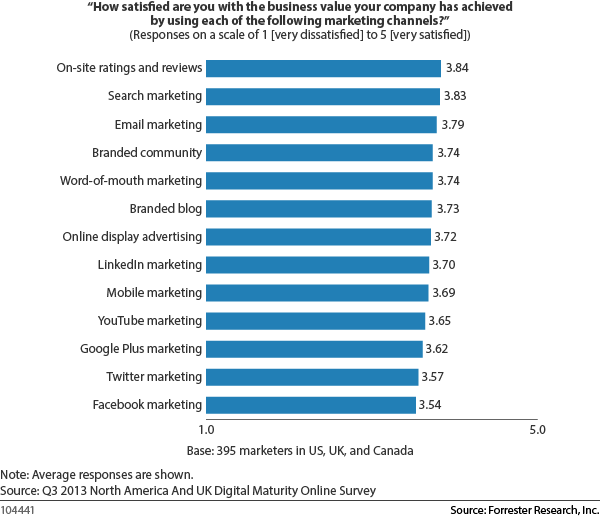What Kim Kardashian Can Teach You About Building A Long-Term Audience
Instagram, Facebook and Twitter all have their place, says columnist Jordan Kretchmer, but the real win is driving people to the content and data you control.
Love her or hate her, there’s no denying that Kim Kardashian is a bona fide social media mogul.
With 30M followers on Twitter, 25M on Facebook and 28M on Instagram, she’s cultivated a larger audience than most of the Fortune 10 companies combined. So in February, when she quietly announced a project that would shift her marketing focus away from those social networks, it piqued my attention.
The Kardashians, along with Tyler, the Creator and Howard Stern, have partnered with technology company Whalerock Industries to strategically take their social presence into their own hands by building independent media hubs.
Kim’s hub, for example, will include everything from photos and videos to makeup tutorials and city guides, she told the New York Times. Why? By centralizing their communities on their own websites and mobile apps, these celebrities put control over the content, data and profits into their own hands — not in the hands of a third party, like Facebook or Twitter.
The reality that TV moguls have made clear, however, is that their new strategy isn’t about deleting Instagram, Facebook and Twitter altogether (a move that might actually #breaktheinternet).
“I see what we do on social media as the appetizer,” Khloe Kardashian told the Times. “This is the whole dinner. Not everything we do can be captured in an Instagram shot.” Kim added, “This isn’t about doing another website. It’s about creating a digital destination.”
“It’s About Creating A Digital Destination.”
Regardless of whether you’re willing to call her a marketing expert, Kim’s point echoes the words and actions of some major players in the marketing industry over the past several months.
Marketing pundit Michael Hyatt, Forrester digital marketing analyst Nate Elliott, and marketing executives from Dell, Eat24 and Southwest Airlines have all preached the same shift in social media marketing strategies.
When you consider the way the social media landscape has evolved, it’s easy to see why these marketers are making a change. Take a look at the charts below. According to this data from Forrester research, maintaining branded social profiles remains the most popular social media marketing tactic… But it’s also among the least effective.


Now look at the tactics that marketers say offer more value: email marketing, ratings & reviews, search, branded communities and word of mouth — all channels that you can optimize by investing in your owned properties.
So instead of spending all your digital marketing dollars investing in campaigns that live on Facebook or Twitter or Pinterest, use those sponsored posts to drive your audience to your owned properties. And when they arrive, greet them with a universe of content they love. Exactly what that universe looks like is up to you, and it depends on what unique values your brand shares with your audience. Here’s how to get there:
1. Find those shared values. Ask yourself, “Outside of my brand, what else does my audience care about?” and then “Does (or should) my brand care about that, too?”
For a beauty retailer like Sephora, beauty is the obvious answer. So the company created its Beauty Board: a Pinterest-esque online community where customers can upload selfies, share beauty tips, and tag their looks with products from Sephora.
But for soda manufacturer Mountain Dew, the answer wasn’t quite as simple as “soda.” So it took its inspiration from highly successful “Green Label” campaigns — with sponsored music, extreme sports, and street and tattoo artists — to build GreenLabel.com, a content destination for urban guys that includes everything from interviews with rising musicians to action sports documentaries.
2. Define a clear objective. A surprising number of marketers mistakenly confuse objectives with metrics. If you want to be truly effective, you need to think bigger than driving traffic or shares (metrics) and determine why you want to drive that traffic or earn those shares.
What’s the real objective? Increasing sales? Gathering email addresses? Building brand affinity? By identifying and understanding the big picture, you can think more holistically about how to drive user behavior.
So instead of just driving traffic to a cool microsite, you can also gather email addresses by asking visitors to register for exclusive content, or drive product exploration through user reviews and photo uploads.
3. Start small. You don’t have to redesign your entire website all at once, and you probably shouldn’t. Instead, find places where community is already thriving on your website or your app.
How can you enhance that experience to offer more value for the fans who are visiting? What additional context would help those users better connect with each other, with your brand or with the product?
There’s no silver bullet that will work across all of your digital properties, but the right combination can make a huge impact on the way your audience engages with your brand.
Building a long-term audience on your own site won’t happen overnight. Just like growing your Facebook fanbase, it will take time and investment. And by growing that audience on a property you control, you’ll always own the experience, the content and the data — that’s a perk no social network could ever promise.
Contributing authors are invited to create content for MarTech and are chosen for their expertise and contribution to the search community. Our contributors work under the oversight of the editorial staff and contributions are checked for quality and relevance to our readers. MarTech is owned by Semrush. Contributor was not asked to make any direct or indirect mentions of Semrush. The opinions they express are their own.
Related stories
